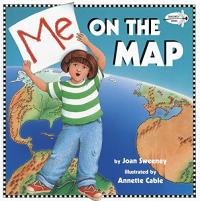
The United States is a big place which holds many children and their families. Maps and what they show are introduced by a girl who begins with a drawing of her room in her home. The house is then placed on a street, in a town, etc. until we see the U.S. as part of the world. This accessible book may help children understand their place on the map — and in the census.
Me on the Map

As seasons and years pass, a sturdy little house that witnesses her bucolic rural setting evolve into a bustling city The beautiful little house became lonely and dilapidated until someone notices her and returns the house to the country. This appealing Caldecott Medalist can be enjoyed on several levels, including a comment on the urbanization of America.
The Little House

Some U.S. Census workers walk from place to place to count people. Readers are invited to take a walk through the pages of this book to count everything from snails to fire trucks! Straightforward text combines with brilliantly hued, crisp illustrations for an appealing counting (and sorting) game that will be read and examined many times.
How Many Snails? A Counting Book

What does the U.S. Census count? Among other things it counts families! Each is different but they are also alike in many ways. A variety of families and their pets are introduced in boldly colored, child-like illustrations and lighthearted glimpse at different kinds of families who all celebrate, laugh, and love.
The Family Book
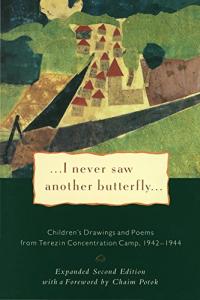
I Never Saw Another Butterfly
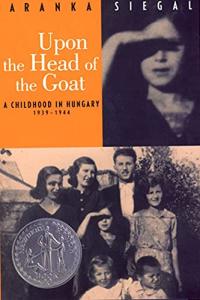
Upon the Head of the Goat: A Childhood in Hungary 1939-1944

I Am Rosemarie

Rachek always begs her Grandmother Oma to tell the story of Oma’s two lives: the one before American and the one after. The first part recounts her marriage prior to World War I and then her family’s move from Poland to Germany to seek safety. Ironically, two of her three daughters spent time in concentration camps but all survived and were reunited in the United States. The illustrations really add to readers’ understanding of this horrible time in history.
Always Remember Me: How One Family Survived World War II

The Children We Remember
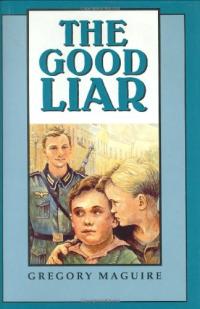
The Good Liar

Behind the Secret Window: A Memoir of a Hidden Childhood during World War Two

A winner of the Caldecott Award for Illustrators, Anita Lobel writes her memoir growing up in Krakow, Poland, during the Holocaust. She was only five when the Nazis invaded, and she is sent to live with their Catholic nanny in the country. Anita and her brother are eventually discovered and deported to a concentration camp where they live until the liberation. Art and books become her saving grace when she finally comes to America as a teenager.
No Pretty Pictures: A Child of War
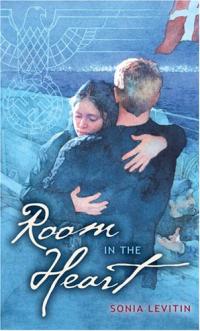
Room in the Heart

I Am David

London Calling

If anyone is looking for a new pet, they may want to consider a rhinoceros. In this amusing book, there’s one for sale “cheap.” Black line drawings with an occasional splash of color and a straightforward text reveal the unique strengths of an unlikely friendship with characteristic Silverstein flair.
Who Wants a Cheap Rhinoceros?

Young readers (or listeners) are invited to share whimsical, imaginative, sometimes head-turning, always laugh-inducing poems in this classic collection.
Where the Sidewalk Ends
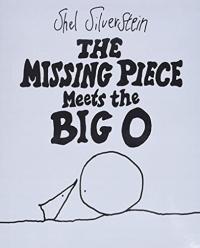
The creature with the missing piece (in the book of the same title) is back. Here it searches for a friend and meets the Big O, learning what it means to have a buddy that suits you well. Simple black line drawings and unadorned language make this a powerful tale that works on many levels.
The Missing Piece Meets the Big O

Its gentle journey begins with melancholy: “It was missing a piece and it was not happy” but concludes with greater self-awareness. The main character is depicted as a Pac-Man-like creature who strives to find what it thinks it’s missing. Simple text and line drawings ideally complement each other in this many-leveled tale.
The Missing Piece

When lions are roused by the sound of guns, only one young lion (who readers come to know as Lafcadio) stays to dissuade the hunter. Rather than deterring the hunter, Lafcadio winds up eating him, becoming a crack shot, and entering the human world. Humor in wordplay and in line drawings creates contagious fun in this poignant tale of having ties to very different worlds.
Lafcadio: The Lion Who Shot Back
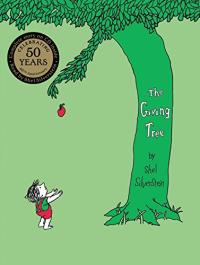
This poignant parable begins, “Once there was a tree and she loved a little boy.” And because she loves him, she gives her all as both boy and tree grow older. When the boy grows into an old man, he sits on the stump of the tree; once again the tree is happy. Simple line drawings complement this timeless tale.
The Giving Tree

Laugh out loud things happen when one has a giraffe who has stretched to become a giraffe and a half. Absurdity and humor build as a boy adds more silly (but rhyming) things to the long-necked animal. Line illustrations build to bring the satisfying tale full circle.
A Giraffe and a Half

As he did in his earlier collections, Silverstein presents the world with shrewd humor, a bit of rebellion, loads of lively language, and endless reader appeal. His signature line drawings add to the comic appeal of the classic poems presented in this collection.
Falling Up

Meet the Pointy-Peaked Pavarius, a Quick-Disguising Ginnit, and other amazing imaginary critters in this poetic bestiary. Delight in the pages of Silverstein’s only collection illustrated in full color. Wordplay and humor are the hallmarks of this engaging collection.
